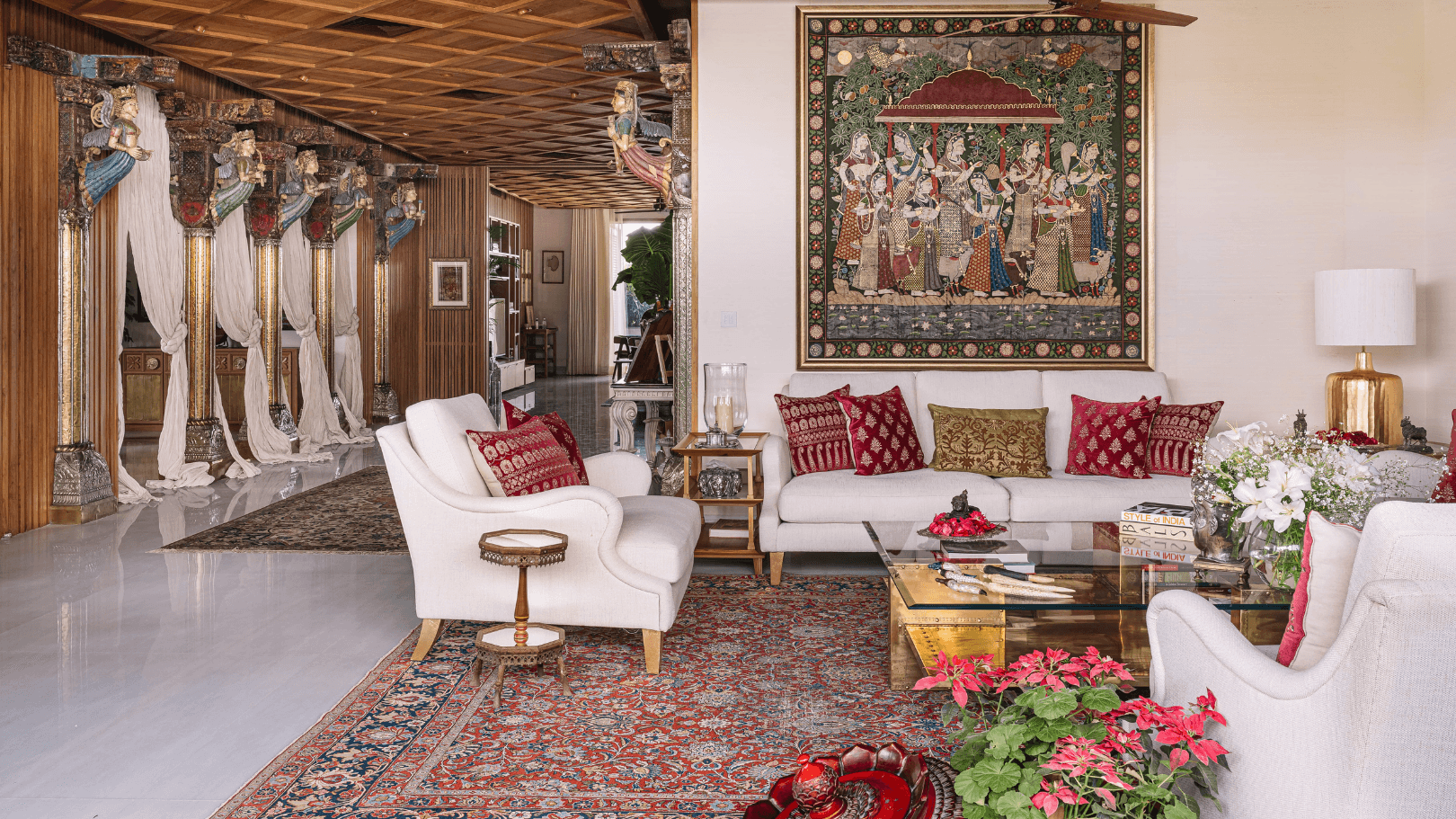For over forty years, Kavita Singh has brought her singular aesthetic to the homes of film stars, politicians, entrepreneurs and business barons. Her keen eye and ability to marry Indian crafts with varied textiles, colours and finishes has made her a favourite of those seeking maximalism that is rooted in India. Describing her aesthetic she says, “I like something grand, something that’s beautiful but also timeless.” She brings that ethos to a four-storey Jaipur home, built for a family.
The client was familiar with Singh’s aesthetic, given that Singh has worked with them on stores for their retail business. About the brief she says, “They know my style, and they’re very much familiar with what I do.” As a result, the interior designer got carte blanche. In fact, they brought Singh in even as the home was being built, so she could work with Amit Ghelot of ASA Architects, to ensure that the building’ design and interior vision coexisted.
That’s not to say that the family didn’t have any input, though their guidance was based on practicality and usage. Singh recalls, “Their first floor is the formal living and dining room. They also have an informal dining room. Because they didn’t want to not come to the first floor. If you have an informal dining room on another floor, the first floor is never really used.” The entire floor is built around antique wooden pillars, which have been salvaged from a haveli. The challenge though was to integrate it, without, as Singh says, “it looking like it's been forcibly put there.” The solution she found was to use it as a partition (between the formal and informal sides) and use curtains to give it a sense of lightness.
Also read: Sonam Kapoor's Mumbai home is a maximalist cocoon of Indian craftsmanship and heritage
The pillars, like so many of the antiques she sources found their way to her. She notes, “The thing is because I use so much Indian art, I have people sending me pictures every day.” She says that she ends up buying what catches her eye and then stores it, “because as and when I want it, I don’t find it.”
Throughout the house, a lot of the art and antiques are the family’s own, having been collected over the years. Singh says, “They have a lot of antiques and things like that, so they took out everything and they said we have all this, we want you to use it.” Elsewhere, she’s customized everything from cushion covers to the furniture, to match the aesthetic of the rooms. Her philosophy, which she brings to every project is, “So you have to have few pieces which attract your attention, but at the same time, they diffuse with the others. So, everything just has to blend in. Nothing should shout out.”
Given the home’s location, there was a desire to use Rajasthani artisanal skills – for example araish work is used in the home office, hand-painted walls in the basement, and hand-carved jalis have been integrated into the design. The basement, which is to be used for entertainment, there’s a forest theme running through the space, but even amidst a bar and hanging mushroom lights, there’s a sense of grandeur. With 15–18-foot ceilings, it doesn’t feel cramped. To create the cohesive look that she desires, Singh says that she ends up making most of her furniture in-house. She notes though, “Sometimes, if there is something that's really beautiful and, you know, out of the box, then yes, I will buy.” Besides aesthetics, there’s also a need to be practical and Singh says, “I want to make sure whatever I give my clients is more or less 80% maintenance free.”
Over the course of her long and storied career, she notes, “Any designer, you go, you go because you like them.” It’s clear that Singh’s keen eye and ability to bring together different eras and elements is what has endeared her to home owners through the years. She admits that the ability to integrate different objects and eras comes easily to her, and it’s something that gives her immense joy. In Jaipur, she’s ensured that each floor of the house is unique, even as the Jaipur home itself comes together as a cohesive whole.

